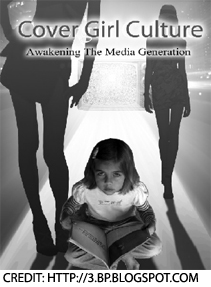Cover girl culture

When you were six years old, what did you want to be when you grew up?
A vet? A police officer? Maybe an astronaut?
These were not the answers documentarian Nicole Clark encountered as she filmed Cover Girl Culture, a documentary that looks at how fashion, media, advertising and celebrities affect today's young girls.
"There was a six year old who wanted to be a model," she said from her home in Los Angeles. When Clark asked the girl why she chose model, the girl simply replied that she wanted to be famous and make money — common themes Clark found in the girls she interviewed. "Ninety-nine per cent wanted to be famous, celebrities and models. They didn't know there were other ways to be famous," she said.
But these girls aren't to blame. Today's culture holds up and idolizes these groups — models and celebrities — even if they may not contribute to society, except to provide magazines with fodder, shesaid.
This reality was something that had been weighing on Clark. Originally from Sarnia, Clark got into modeling to pay for school, a piece of her past she often kept quiet because she found it "embarrassing to be a model." Growing up in the country, she was unaccustomed to caring about how she looked.
She stayed for four years with Elite Model Management before leaving. But while she was in the industry, she saw the effect it had on impressionable young girls who were told how to look and act, and who trusted the "elders" of the industry. Clark was even asked not to speak during jobs because she was considered too intelligent.
The pressures facing girls today have increased significantly, she said. "Now it's a constant bombardment."
In Cover Girl Culture, Clark explores the messages that media like music videos and magazines and advertising sends out to youth. She also speaks with individuals who are a part of those messages, from models to editors. "So few were willing to talk about things because they're scared of losing jobs," said Clark about the models.
Clark got interviews with editors at Teen Vogue and Elle magazines, but said those interviewed mainly stayed mum about the issues the documentary addressed. "They weren't able to address it," said Clark regarding her questions to the editors about the messages magazines represent. "They politically tiptoed around it."
"'We're giving them a dream ... a joyful dream,'" Clark said, quoting one editor's response.
She also spoke with a body image expert who said that individuals in the media, who are at the helm of these messages, have "blinders on to not see the impact."
Clark interviewed girls in LA, Texas, Florida, Sarnia and London. The only difference she found was that Canadian girls were better able to articulate how the different media messages made them feel, whereas American girls seemed more blindly influenced, she said.
So what do we do now that generations of young girls have been inundated with image garbage?
Clark said solutions could start at home. She encourages parents to play an active role in what their kids are watching and consuming. Young girls should know that they could write letters to editors if they're not happy about how their gender is being represented in a publication. She also said parents should make their children aware that when they buy a magazine or piece of clothing, their money is their vote and it's supporting the message and advertisers surrounding their purchase.
"Parents need to be interactive with kids' lives, help them develop critical thinking," she said.
Clark's documentary is now required viewing at Princeton University in media and women's studies courses and was recently featured on CNN. She's currently working on two more documentaries, one will be a follow-up to Cover Girl Culture, the other will be focused on families and raising them in a media-saturated world.
For more information on Clark and Cover Girl Culture, visit www.covergirlculture.com.













